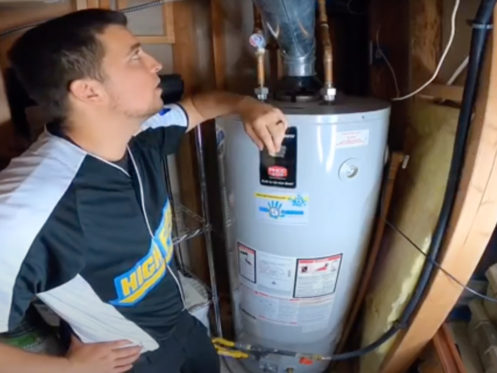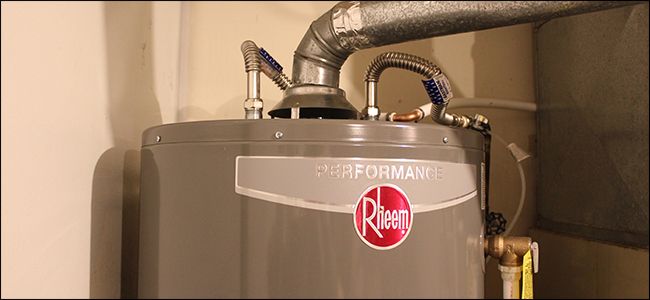Important Care Tips for Your Home's Hot Water SystemTips on How to Keep Your Home's Hot Water System in Good ConditionTips on How to Maintain Your Home's Hot Water System in Good Condition
Important Care Tips for Your Home's Hot Water SystemTips on How to Keep Your Home's Hot Water System in Good ConditionTips on How to Maintain Your Home's Hot Water System in Good Condition
Blog Article
Just about everyone seems to have his or her own idea involving Tips on Maintaining a Water Heater.

Hot water is crucial for everyday convenience, whether it's for a refreshing shower or cleaning dishes. To guarantee your warm water system runs effectively and lasts much longer, regular maintenance is vital. This short article offers sensible tips and understandings on just how to maintain your home's warm water system to stay clear of disruptions and costly fixings.
Intro
Maintaining your home's warm water system could appear overwhelming, yet with a couple of basic steps, you can guarantee it operates efficiently for years to find. This overview covers every little thing from comprehending your warm water system to DIY upkeep tips and understanding when to call expert help.
Importance of Preserving Your Warm Water System
Routine upkeep not only extends the life-span of your warm water system however additionally ensures it operates effectively. Ignoring upkeep can lead to lowered efficiency, higher power costs, and also premature failure of the system.
Indications Your Warm Water System Demands Upkeep
Knowing when your warm water system needs attention can stop significant problems. Keep an eye out for signs such as inconsistent water temperature level, strange noises from the heating unit, or corroded water.
Understanding Your Hot Water System
Prior to diving right into maintenance jobs, it's practical to understand the fundamental parts of your hot water system. Commonly, this includes the hot water heater itself, pipelines, anode rods, and temperature level controls.
Monthly Maintenance Tasks
Routine month-to-month checks can aid capture small issues before they intensify.
Flushing the Hot Water Heater
Purging your water heater eliminates debris accumulation, improving effectiveness and extending its life.
Monitoring and Changing Anode Rods
Anode rods avoid rust inside the tank. Inspecting and replacing them when worn out is crucial.
Inspecting and Readjusting Temperature Level Setups
Changing the temperature settings ensures optimum efficiency and security.
Do It Yourself Tips for Maintenance
You can execute a number of maintenance jobs on your own to keep your hot water system in top problem.
Looking for Leaks
Frequently inspect pipelines and links for leaks, as these can cause water damage and greater expenses.
Testing Stress Relief Valves
Testing the stress relief valve guarantees it works correctly and protects against extreme pressure buildup.
Shielding Pipes
Shielding hot water pipelines minimizes heat loss and can save power.
When to Call a Professional
While do it yourself maintenance is beneficial, some concerns require specialist experience.
Complicated Issues Needing Specialist Assistance
Instances consist of major leakages, electrical issues, or if your water heater is constantly underperforming.
Regular Professional Upkeep Benefits
Specialist maintenance can include thorough evaluations, tune-ups, and making certain compliance with security criteria.
Final thought
Normal maintenance of your home's hot water system is essential for effectiveness, long life, and price financial savings. By following these ideas and recognizing when to seek expert assistance, you can make certain a reputable supply of hot water without unforeseen interruptions.
Water Heater Maintenance Tips
Test the TPR Valve
Shut off the power and the cold-water supply valve. Place a bucket under the pipe connected to the temperature-pressure-release (TPR) valve on the top or side of the tank. (This valve opens if the tank pressure gets too high.) Lift the valve’s tab to let some water out, then let go. If water keeps flowing, drain the tank partway, unscrew the old valve with a pipe wrench, and install a new one. Check the Anode Rod
Put a hose to the tank’s drain cock and let out a few gallons of water. Now fit a 1 1/16-inch socket onto the rod’s hex head on top of the heater (or under its top plate) and unscrew the rod. If it’s less than ½ inch thick or coated with calcium, buy a new one, wrap its threads with Teflon tape, put it back in the tank, and tighten securely. Use this segmented rod if headroom above the tank is limited. Drain the Tank and Wash Out Sediment
Drain the remaining water in the tank into the bucket, then stir up the sediment on the tank’s bottom by briefly opening the cold-water supply valve. Drain and repeat until clean water comes out of the hose. Close the drain cock, refill the tank, and turn its power back on. Adjust the Temperature
Find the temperature dial on the side of the tank and unscrew its cover. Adjust the dial to 120 degrees using a flathead screwdriver. For every 10 degrees the temperature is lowered, you can expect to save up to 5 percent in energy costs. Turn the water heater off or the thermostat down to its lowest setting if you plan to be away from home for more than three days. Insulate the Pipes
Buy some self-sticking 3/8-inch-thick foam pipe insulation that matches the pipes’ diameter. Slide the foam over the hot-and cold-water pipes as far as you can reach. Insulating the cold-water pipe prevents condensation in summer. Peel the tape and squeeze the insulation closed. If the pipe is 6 inches or less from the flue, cover it with 1-inch-thick unfaced fiberglass pipe wrap. https://www.thisoldhouse.com/plumbing/21016402/how-to-maintain-a-water-heater

Hopefully you enjoyed our section about Tips on Maintaining a Water Heater. Thanks so much for taking time to read through our post. Sharing is good. One never knows, you may just be helping someone out. I value reading our article about Water Heater Maintenance Tips You Can't Afford to Forget.
Get Your Estimate Now Report this page